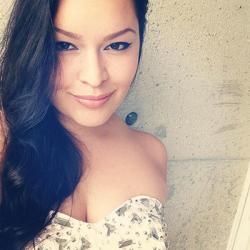
Smoking Deer Hide at Dufferin Grove Park | Image Source: Sage Paul
Inspired, connected, and empowered is how I felt as I sat around the fire at Dufferin Grove Park when we started to smoke our deer hide, the final step in our four part series of Hide Tanning workshops. Graciously facilitated by the Setsuné Fashion Incubator of Toronto, we invited our family, friends and the community to join us for a potluck feast (I brought Scone Dogs, a delicacy to any Native gathering) in the middle of the bustling park. On what turned out to be a beautiful sunny July day, many of the participants brought their children and some of us even brought our parents. The day was filled with laughter, great food, hard work and a teaching from our Elder Ed. As I reflect on the journey that led me to this point, I’m so immensely grateful for all the hard work that goes into planning workshops like these.
Setsuné Fashion Incubator is an initiative to teach traditional and contemporary artistic skills for fashion, textiles and wearable art. It aims to foster, grow and build skills that most of us urban Natives do not have access to on the regular. I still can’t believe that we fleshed, brained and tanned two deerskins in the heart of downtown Toronto! The workshops are open to everyone and all races but priority is given to Aboriginal women and mothers aged 16-35. I love the fact that its open to people of different backgrounds because it bridges the gap between other races by giving them a respectful way to engage with the Native community. My hope is that it’ll someway help put a stop to cultural appropriation. Setsuné is an inclusive space, which is a fantastic way to create a more understanding and peaceful future.

As a child I got to spend a lot of time with my Grandmother on my Mothers side, the Irish side, but I never got to meet any of my other Grandparents because like many other Aboriginal peoples, their lives were a constant struggle and short lived. My Dad has been on his own in the big city of Toronto since he was 15 years old and he’s done a great job at raising my brothers and me but I’ve always felt there was a bit of a disconnect between myself and my Ojibwe culture. I grew up without elders passing on any information on how to do any traditional art or how to gather traditional supplies, so I’ve had to look for it and figure it out myself – until now. I’ve never felt so connected as I did throughout the entire hide tanning workshop, it’s been one of the highlights of my life. Participating in this feels like something inside me has switched on. I finally feel connected.
As an artist, I draw from my culture, I’m always researching and learning new techniques but these workshops have been something else – something special. After each one I’ve left feeling an overwhelming sense of creativity. I run a business called Hand of Solomon – Aboriginal Jewellery Art and just over the course of a month I’ve filled up a sketchbook of new designs. I’m beyond inspired.

The participants of Setsuné are all like-minded individuals. We all thirst for the knowledge of our ancestors and want to reconnect with our roots so that we as artists can transcend and focus on pushing Aboriginal arts to new heights. As I got to hangout with all these amazing people, I realized that we have taken something back that was stolen from us. Not just the traditional techniques but our pride, community, and passion. As a collective we felt so strong. Our workshop facilitator, Rosary Spence, was such a great teacher and it was phenomenal to me that she’s that young but so full of wisdom. This experience with all those amazing women made me feel like a warrior, like I’d gone to battle to reclaim what was lost to me – we came out of this empowered and unified. Now more than ever, I’m committed to prove how Native art can evolve to new and great mediums. Let’s take Native art to the next level and show them what we got!
About Setsuné Indigenous Fashion Incubator
Setsuné (set-soon-eh) means grandmother in the Dene language and we use it to acknowledge intergenerational cross-overs, blood memory and oral histories expressed in fashion and the arts. The Setsuné Indigenous Fashion Incubator fosters and promotes the research, development and creation of new works by young Indigenous women and mother artists (16-35) in traditional and contemporary fashion, textiles and wearable art. Setsuné delivers programming for the research and creation of new works, connects artists with industry, galleries and allies to encourage a respectful discourse and promotes Indigenous fashion and art among diverse cultures and sectors. Setsuné is a Collective comprised of women artists, designers, managers and community members Sage Paul, Erika Iserhoff and Louise Solomon; we operate as a not-for-profit within an Indigenous framework. Workshop Registration runs until the end of August and is open to everyone. Remaining workshops of the 2015 series include: “Regalia Making”, “Silk Screening”, “Moose Hair Tufting, Beading & Applique”. The “Group Creation Project” Call for Submissions to Indigenous Women Artists will be released in August 2015. For more information go to: www.setsuneincubator.com









